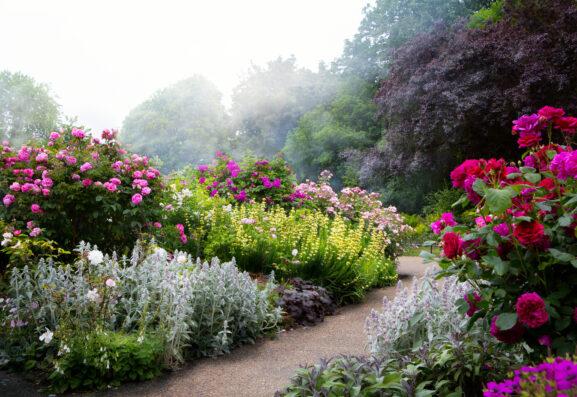If You Have Ever Dreamed Of Making Your Own English Cottage Kind Of Garden, Here’s How You Can Do This

The heart of suburbia is made up of meticulously manicured green lawns lined with tasteful flower beds and surrounded by white picket fences. But lately, people have been shifting away from the traditional image of suburban homes and turning to a more rustic design vision.
And that’s where the English cottage garden comes in. With an English cottage garden, you are able to add more whimsy and personality to your surroundings.
Instead of your yard being perfectly polished and bare, you get to be enveloped by a variety of lovely flowers, bushes, shrubs, and other plants.
Compared to the classic minimal green lawns, which take a lot of work to care for, English cottage gardens are all about abundance and low maintenance.
You can let your plants take over! However, there is such a thing as too overgrown, so here are some tips on how to create an English cottage garden that looks like it’s a place straight out of a fairytale.
Your garden can contain whatever plants you want. Put your own spin on it! But if you want a little more guidance on how to cultivate it, take a look at some common flowers that are usually incorporated in English cottage gardens.
For example, there are roses, peonies, wisteria, hydrangeas, coneflowers, dahlias, cosmos, foxgloves, hollyhocks, and snapdragons.
Have a healthy mix of both annuals and perennials so there will always be some color in your garden. To give your garden structure and style, add blossoms of different hues and heights. You can try balancing blue flowers with yellow ones to really up the uniqueness factor.
Flowers aren’t the only thing you can grow in this type of garden. Herbs are also a great addition, especially if they’re edible! Plant some in pots and others next to flowers.

Konstiantyn – stock.adobe.com – illustrative purposes only
Some suitable herbs for your English cottage garden include lavender, peppermint, spearmint, rosemary, basil, chives, and chamomile.
Fruit trees that grow apples, cherries, peaches, pears, and plums are also welcome. Just make sure the fruit trees you select will be able to thrive in your climate. The same goes for any other species of plants you decide to incorporate.
For more texture, elegance, and privacy in your garden, consider implementing boxwood shrubs, privet hedges, ferns, sweet almond bushes, and ornamental grasses.
Before burying your plants in the ground, decide where you want each specific one to go. Observe all the nooks and crannies of your outdoor space and mentally carve out pathways and archways.
Then, gather your supplies. Once you have purchased your flowers, place them on top of the ground so you can better envision the layout of your garden.
After everything has been established into the ground, apply mulch to keep your plants moist and reduce the number of weeds that pop up.
Lastly, don’t forget about the decor! Bird baths, sculptures, fountains, benches, and wind chimes are just a few of the elements that help tie the whole charming look together.
If true crime defines your free time, this is for you: join Chip Chick’s True Crime Tribe
Add Some Intrigue To Your Deck This Year By Making A Mini Pond In A Container
Sign up for Chip Chick’s newsletter and get stories like this delivered to your inbox.
More About:Gardening